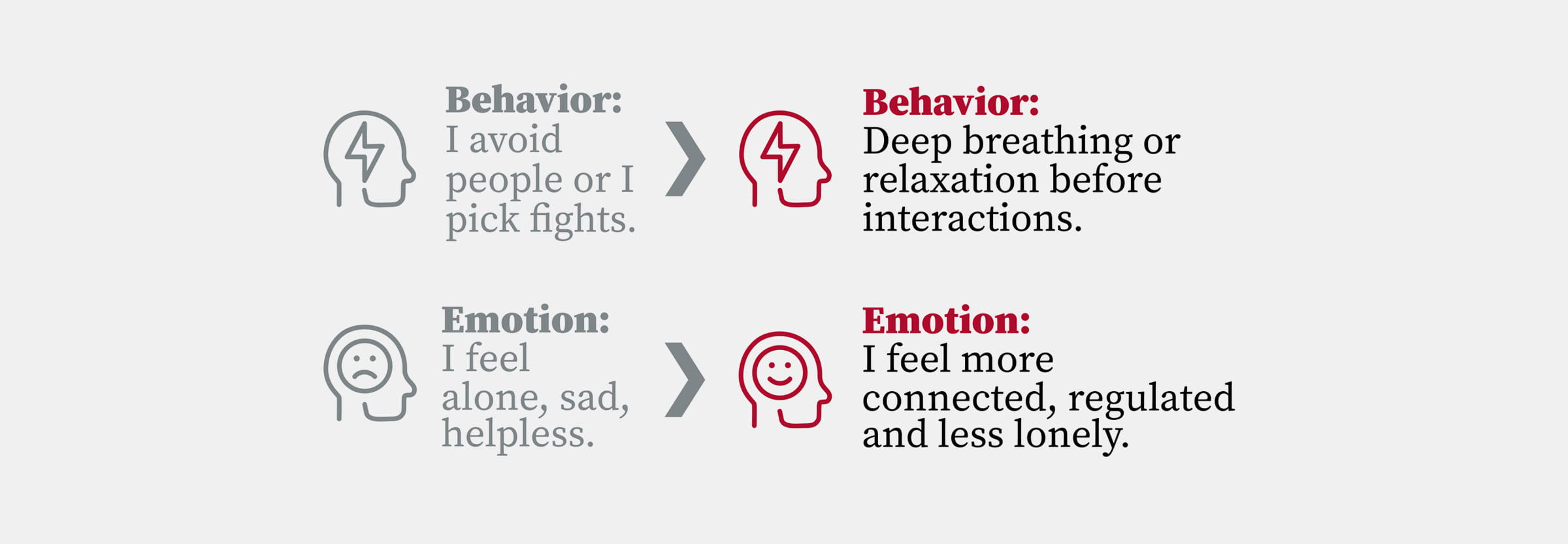
Zero suicides: A paradigm shift in suicide prevention for military service members
His own military service in Iraq sent Craig Bryan, PsyD, on a quest to improve the mental health of military service members and revolutionize the prevention of suicide through a new approach called ‘Zero Suicide.’
Craig Bryan, PsyD, began his journey to become a clinical psychologist in the wake of 9/11. When the United States invaded Iraq in 2003, a discussion with a professor and fellow classmates on war’s psychological burden on military service members influenced his decision to devote his work to those affected by war. Bryan wanted to help alleviate the mental trauma and suffering that plagued military service members.
In 2009, he enlisted in the Air Force to complete his postdoctoral internship, the final educational requirement before he could practice.
He deployed to Iraq.
There, as an active duty service member himself, he served as director of the Traumatic Brain Injury Clinic at the Air Force Theater Hospital.
During one distressing week, four service members died by self-inflicted gunshot wounds. Each were in his hospital at the same time, on life support to enable organ donation. It was the first time he faced the brutality of suicide.
“They were under pressure and extreme stress and had access to firearms,” Bryan says. “Overwhelmed in the moment, they each made a decision there was no coming back from.”

When he returned from Iraq, Bryan transitioned into academia to conduct research, funded by the U.S. Department of Defense, on suicide prevention and post-traumatic stress disorder (PTSD) among military personnel.
He drew on the experience he shared with fellow veterans to frame research questions.
When a colleague inquired about how he knew what to ask and how to ask it, he responded, “Because that is what we experienced.”
The experiences, coupled with results from his research, led him to develop a perspective that diverges from mainstream ideas on the cause of suicide in military service members. He asserts that mental illness wasn’t the root cause of those four service members’ decisions to end their lives.
He wanted to gain a deeper understanding of suicide and, at the same time, be able to show why existing interventions and treatments weren’t doing a good job of preventing it.
His work has created a paradigm shift in long-held beliefs about what causes – and what prevents – suicide. His contradiction of traditional assumptions and development of innovative and comprehensive approaches to reduce suicide rates is gaining much attention in the field among peers and institutions working to stem this public health crisis.
It reclassifies suicide from mainly a mental health issue to one that is complex and influenced by different risk factors, including personal decision-making style, the availability of lethal means and reaction to life and financial stresses pressing down on people.
Bryan says that while traditional mental health treatment is important, it’s not enough because it focuses on keeping a patient from dying – it doesn’t examine circumstance, opportunity and impulse, all things that also play a part in making a potentially deadly decision.
“We forget that the reason they choose to die is because they have let go of living,” Bryan says.
“If we can help people move through these dark periods and make their lives worth living, they won’t want to die.”
Bryan and his team reviewed decades of research that he explains was vulnerable to bias. When they corrected for those biases, they found that a significant percentage of people who die by suicide – maybe up to half – don’t have a mental illness. He also looked at published studies on suicide attempt survivors that provided insight into how much time passed between thinking about suicide and the attempt. It showed that a quarter of those interviewed reported the time frame was five minutes or less.
With this new frame of reference, they started to think about suicide in a much different light – one illuminated through intervention that alleviates suffering, not ends it through death. Bryan and his team developed and demonstrated the effectiveness of brief cognitive behavioral therapy (BCBT) on suicidal military personnel. BCBT focuses on challenging and changing cognitive distortions and building personal coping strategies that inhibit, or stop, an action when someone is feeling intense emotional distress.
Brief Cognitive Behavioral Therapy (BCBT) explained

“All of these strategies essentially help us to hit the brakes and gain a bit more control over our reactions,” Bryan says. “They help people focus on positive things and reconnecting to aspects of life, relationships and connections that make life worth living.”
Results of their randomized clinical trial indicated the BCBT treatment reduced suicide attempts by 60% as compared to traditional treatment. More recently, they completed a second randomized clinical trial showing that crisis response planning, a key component of BCBT, reduced suicide attempts by 76% among military personnel as a stand-alone emergency intervention.
In 2020, Bryan relocated his research operation, the Suicide and Trauma Reduction Initiative for Veterans (STRIVE), from the University of Utah to The Ohio State University Wexner Medical Center to integrate this innovative treatment and suicide prevention efforts into the Columbus community. Bryan is now the director of the Division of Recovery and Resilience in the Department of Psychiatry and Behavioral Health where he holds the Stress Trauma and Resilience (S.T.A.R.) Professorship in the College of Medicine.

“We chose Ohio State because of the department’s growth in research that focuses on prevention, recovery and resilience,” Bryan says.
“Ohio State is known for groundbreaking basic, translational and clinical science that advances patient care, an ideal setting to tackle an area of medicine where, despite an increase in awareness, outcomes continue to get worse.”
Today, veterans self-identify or are referred to STRIVE from other programs or clinicians. Therapy sessions take place in person or via telehealth. Patients either attend one-hour therapy sessions on a daily basis for two weeks or on a weekly basis for three months, depending on the program or study they are assigned.
Bryan says studies up until now have not included medications, but his team will soon begin a new study that includes stellate ganglion block, an injection that’s been shown to reduce symptoms of PTSD, in addition to therapy. The aim is to determine if the combination of the injection with therapy improves outcomes more than therapy alone.
Zero suicide
Bryan and his team are taking what they’ve learned to implement the Zero Suicide Framework, a set of tools and strategies that promotes organization-wide transformations in health and behavioral health care systems toward safer and more effective suicide care. Many other agencies and organizations across Ohio have adopted the framework, including the Ohio Department of Mental Health and Addiction Services and the Ohio Children’s Hospital Association.
Bryan and his team recently received a grant from the Cardinal Health Foundation to enhance and expand Ohio State’s existing suicide care practices in three key settings: emergency departments, outpatient mental health clinics and inpatient psychiatry units. He says that emergency departments serve as a primary entry point for many high-risk patients.
“Suicide risk screening in our EDs is critical for connecting vulnerable patients with suicide-focused care delivered within our inpatient and outpatient mental health services,” Bryan says.
“As providers, we need to make asking directly about suicide and responding appropriately as routine as checking blood pressure, height and weight at every health care visit.”
They will also establish a specialty care program that will offer additional support for patients at elevated risk for suicide at a time when they are most vulnerable: the time when they transition from higher, more intensive levels of treatment such as inpatient psychiatric care to less intensive treatments such as outpatient treatment.
The grant will allow Ohio State to expand the availability of BCBT in outpatient mental health services and to pilot novel methods to improve tracking and monitoring of suicide risk over the course of mental health treatment. They believe these efforts will help them reach the goal of reducing nonfatal suicide attempts and suicide deaths by 10% among adults within one year of receiving behavioral health or medical services.
“Our work builds in support upstream from an acute crisis,” Bryan says. “We may never actually reach zero suicides but setting zero as our target keeps us focused on providing the highest quality care possible for patients – care that proactively addresses the untold suicide risk factors.”








